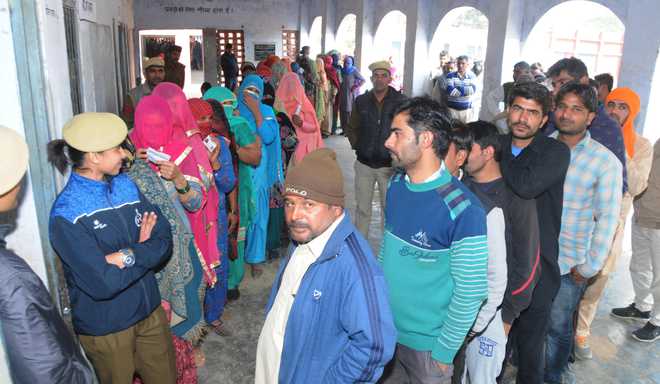
Rajbir Deswal
This is a voice from the past; a voice which echoes, unlike the din created by the present-day loud and confusing electioneering, where more than the candidates’ persona, their social media presence matters. I spent my formative years in Jind. Our house was strategically situated and we never missed any action in administration or politics. It was a three-storeyed building; on the back were the courts, and the front road led to the police station. On one side was a hospital, and on the other a mortuary.
Unlike the contesting young turks of today, there used to be veterans. I recall some candidates — Ram Singh, Dal Singh, Babu Daya Kishan, Inder Singh Kundu, Neki Ram, Inder Singh Sheokand. The modern-day political parties — the Congress, BJP, INLD — weren’t on the political horizon, except Communist parties. Some redoubtable candidates had quintessential traits of character — someone was known for touching feet and insisting on blessings, while another would be inebriated even while seeking votes.
The advertisement material, too, was different. There was only the public address system or cheap quality posters. I was fond of collecting plastic lapels and tokens known as billa. The billas had party symbols embossed or printed on them. I remember the white ‘do bailon ki jodi’ of the Indian National Congress, and the turmeric-yellow earthen lamp of the Jan Sangh. Communist parties had the usual ‘sickle and hammer’ in red. Independents’ symbols included umbrellas, inkpot and pen, an elephant or a bicycle. There used to be a stencil for stamping walls for advertisement.
I remember the veritable Kamraaj heading the Congress then. A dedicated song was played in a rickshaw on the loudspeaker: Watan ke naam ke liye/ Gareeb awaam ke liye/ Ye waqt ki pukar hai/ Ki Congress ko vote do. In villages, the slogans were more brutal, wishing a detractor nothing less than death itself! Kali haandi dhoiyo na/ Mar gaya roiyo naa (Even when the candidate is dead, don’t wash the black milk-pitcher).
The counting took place on the court premises. On victory, a sea of supporters would lob pugrees in the air. After the procession had left, rejoicing and carrying the winner on shoulders, the loser was whisked away to safety by the police.
Those were the days when only Pt Bhagwat Dayal Sharma and Rao Birender Singh dominated the state’s political scene. Bookies were not known till then and there were no bets on a candidate’s prospects. The hub of political activity and speeches was only the Town Hall, near the Grain Market, which was central to the city. Once in a while, I would attend political meetings and speeches, with hardly 200-300 men gathered there. ‘Samast Haryana sammelans’ and HUDA ground politics was a later day happenstance.



























